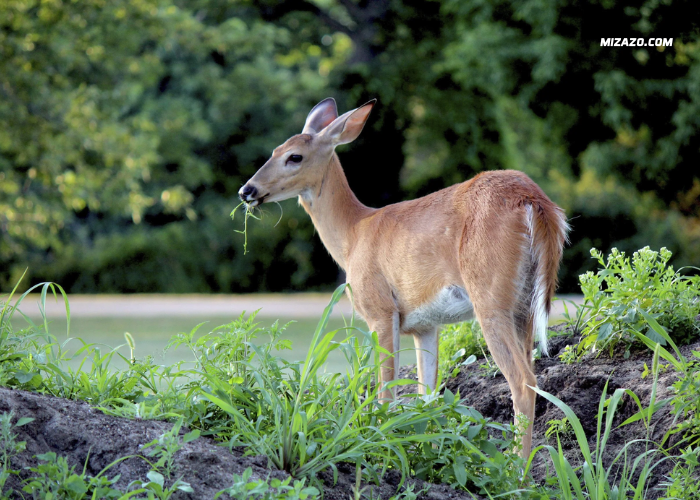Gardening enthusiasts often find solace in cultivating a variety of plants in their outdoor spaces. Among the many choices available, gardenias stand out for their captivating beauty and enchanting fragrance. These flowering shrubs are prized for their elegant white blooms and glossy green foliage, which can add a touch of sophistication to any landscape. However, a common concern among gardeners is the potential threat posed by wildlife, particularly deer, to their beloved gardenias. In this article, we delve into the question: “Do deer eat gardenias?” by exploring the dynamics of this interaction and providing insights into effective ways to protect these ornamental plants.
The Fascinating World of Gardenias
Gardenias, scientifically known as Gardenia jasminoides, are native to Asia and are highly regarded for their stunning appearance and fragrant flowers. They belong to the Rubiaceae family and are often associated with warm climates where they thrive, producing their signature blooms during the spring and summer months. The blossoms emit a powerful and captivating scent that can transform a garden into a sensory oasis. With their evergreen leaves and attractive appearance, gardenias have earned a place in the hearts of garden enthusiasts and landscapers alike.
The Deer Dilemma
One of the primary concerns for gardeners when introducing gardenias to their landscapes is the potential threat posed by deer. Deer are notorious for their voracious appetites and can wreak havoc on gardens, consuming a wide range of plants as part of their diet. However, determining whether deer eat gardenias is not as straightforward as it might seem.
Deer Diet: What Do They Eat?
Deer are considered opportunistic herbivores, meaning their diet consists of a variety of plants depending on availability and preference. They typically feed on a mix of grasses, leaves, shoots, fruits, and flowers.
The specific plants that deer target can vary based on factors such as geographic location, season, and local vegetation. In times of scarcity, deer may venture into landscapes and gardens in search of sustenance, potentially causing damage to ornamental plants.
Do Deer Eat Gardenias?
When it comes to gardenias, the verdict isn’t unanimous. While gardenias are not considered a preferred food source for deer, they are not entirely immune to deer browsing either. In many cases, gardenias might escape the attention of deer due to their bitter-tasting leaves and the presence of compounds that make them less appealing. However, during periods of food scarcity or when deer populations are particularly high, gardenias could become targets for browsing.
Factors Influencing Deer Behavior
Several factors influence whether deer will consume gardenias. These include:
- Location: The geographic area in which gardenias are grown plays a significant role. In regions with high deer populations and limited natural food sources, the likelihood of deer grazing on gardenias increases.
- Season: During the growing season, deer have access to a wider range of plants, reducing the chance of them targeting gardenias. However, during the colder months when food is scarce, they might explore less typical food sources.
- Alternative Food Sources: The availability of alternative food sources in the surrounding environment can divert deer away from gardenias. If there are abundant natural plants that deer prefer, they might not bother with gardenias.
- Deer Population: Higher deer populations often lead to more frequent encounters between deer and garden plants. Overpopulation can exacerbate the risk of deer damage.
Protecting Gardenias from Deer
For gardeners who are concerned about deer damage to their beloved gardenias, several strategies can be employed to mitigate the risk:
- Plant Selection: Consider planting gardenias in conjunction with deer-resistant plants to divert the attention of deer away from them.
- Fencing: Physical barriers like fences can effectively deter deer from entering garden areas. However, fences need to be sufficiently tall and well-constructed to prevent deer from jumping over or squeezing through.
- Repellents: Deer repellents, both commercial and homemade, can be applied to gardenias to make them less attractive to deer. These repellents emit odors or tastes that deter deer from feeding.
- Scare Tactics: Using noise-making devices or visual deterrents, such as reflective tape or scarecrows, can startle deer and discourage them from approaching.
- Landscaping Design: Incorporate deer-resistant plants around your gardenias to create a less appealing environment for deer.
Conclusion
The relationship between deer and gardenias is complex and influenced by various factors. While gardenias may not be at the top of a deer’s preferred menu, the risk of deer damage cannot be entirely dismissed.
As gardeners continue to cultivate these beautiful flowering shrubs, it’s essential to understand the dynamics of this interaction and implement effective strategies for protecting gardenias from deer browsing.
By combining knowledge of deer behavior with appropriate protective measures, gardeners can ensure that their gardenias thrive and continue to grace their landscapes with their exquisite blooms and fragrance.

